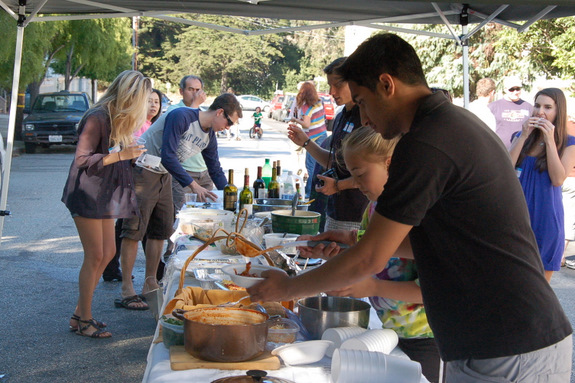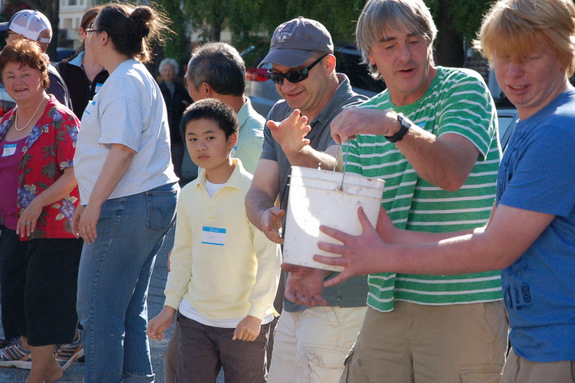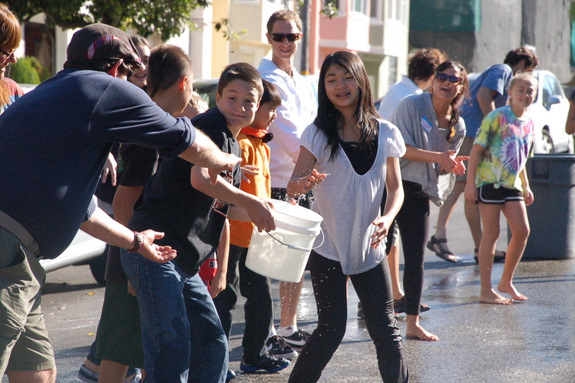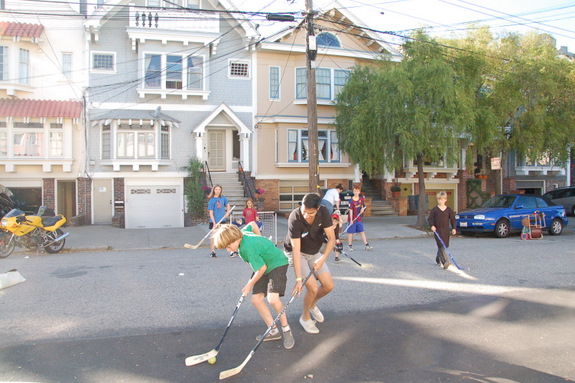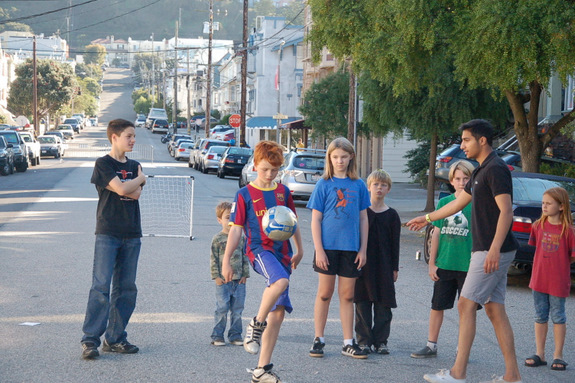
The demand for car-free streets in San Francisco is easy to see at the Sunday Streets events around the city. If there's no Sunday Street in your neighborhood, though, not to worry: You can bring a car-free event right to your doorstep.
With a little outreach to your neighbors, a permit application, and a fee, it may be easier than you think.
My block in the Inner Sunset did it this Sunday for the tenth year in a row for its annual block party, bringing neighbors together for a potluck, games, and conversation.
Organizer Walter Van Riel said once he put the vehicle barriers in place, the street was transformed in an instant. "Not more than five minutes later, I heard the sound of kids playing in the street," he said.
Going car-free relieves streets of the noise and danger normally present, which can prevent kids from playing outside and inhibit relationships between neighbors. Mary Deely, who has lived on the block since 1970, said without the block party, she wouldn't know her neighbors as well. "I wave to people, but I don't really talk to them until the block party," she said.

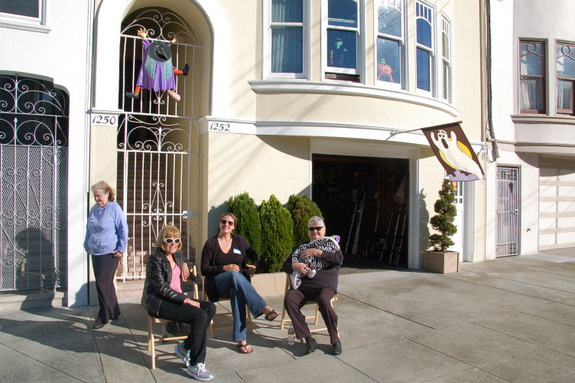
The neighbors on this block, as well as the SFMTA staff who issue the permits, have come to expect the party on the last Sunday before Halloween, making it easier to get everyone together each year and obtain a permit.
Cindy Shamban of the SFMTA Sustainable Streets Division, who oversees the permit program, said 91 block party permits have been issued this year.
The fee for the permit is as low as $150 for applications more than 60 days in advance [PDF], and permits can be obtained within a few days at the maximum rate of $450. Van Riel said the individual cost can be kept to a minimum by pooling contributions between neighbors.
The process requires approval from a committee and posted notification to all neighbors, which isn't a major impediment to doing something once a year, but what if you want your street to function as a community space every day?
Neighborhood streets can be designed in ways that enable more social activity all year round. Examples can be found in other cities around the world. In the Netherlands, shared streets called "woonerfs" use traffic-calming features to tame motor vehicles and elevate human movement and interaction, allowing children room to play. Just across the border in Van Riel's hometown of Antwerp, Belgium, he says common gathering spaces are taken for granted.
"Woonerf"-style streets could be common in San Francisco someday, if we have the will. As Donald Appleyard first documented in his 1981 publication "Livable Streets," streets that prioritize social life over traffic bring real benefits to a city. Check out the Streetfilm on his work, followed by more photos below:
